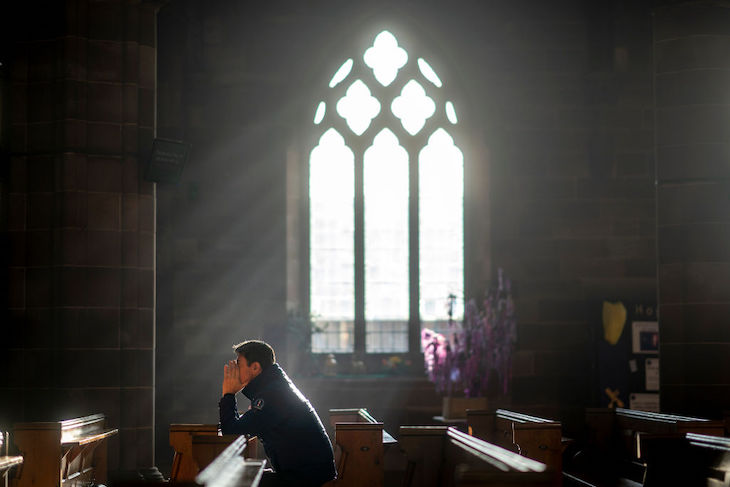The Church of England’s various travails and dilemmas – on controversial issues, like sexuality and safeguarding – are on one level beside the point. Even if it managed to solve these problems, the Church’s drift to the margins of our culture looks likely to continue.
The really fundamental issue is how the CofE can reverse that drift, how it can renew itself. This is harder to talk about, as it has little connection with the news cycle. The renewal of the Church depends on the quality of its worship culture, and the traditional forms seem unable to generate new excitement.
Public festivity is the key to the renewal of worship
Its main historic attempts at renewal were rooted in worship culture. The Catholic revival of the mid-nineteenth century, known as the Oxford Movement, involved lots of ritual finery and theatrical pomp. It produced many good things, but the ‘high’ style could not really unite a Church rooted in Protestantism. And it still can’t.
More recently, a rather edgy version of ‘low church’ made waves: charismatic evangelicalism, which involves exuberant responses to the Holy Spirit. But this style cannot unite the Church either. A low, or informal, style is linked to theological positions that most Anglicans consider too narrow.
The Church’s problem is that renewal must be rooted in ritual, but the two main ritual styles are too partisan and too divisive. So the Church reverts to its comfort zone: a mix of reined-in high, and reined-in low. In fact, this can work pretty well. Plenty of parishes combine ceremonial order with informal warmth to good effect. But there’s generally a lack of extrovert ambition, radical edge, oomph.
Is a third way possible? I happen to think so. As I see it, the new energy should come from outside of normal church worship – from occasional festive events. Imagine a parish that was located near a major pilgrimage site, for example, or the site of a big passion play or a royal wedding. Its regular worship would be infected by the excitement of that big event. Also, look at how Christmas adds a magic spark to church-going.
Public festivity is the key to the renewal of worship. And the CofE is uniquely well-placed to effect this renewal. It has a hunger for ritual in its bones – and also a dissatisfaction with the existing forms of ritual. Also, because of its history of cultural centrality, it has an urge to make religion spill out of a box called ‘church’ and merge with culture.
This is why I have been trying to help organise a new festival. A few years ago, it struck me that Pentecost – which falls this year on the 8 June – would be the perfect day for some outdoor celebration. It is the day on which Christians celebrate the descent of the Holy Spirit to earth, in tongues of flame, and the birth of the Church. The fire from heaven could be represented by bright banners, I thought; if lots of young Christians congregated in central London with their banners, that could make quite a spectacle, and be a lot of fun. It could also be a show of pride in our national religion; why should secular causes monopolise public festivity? It could even be something that puts the CofE back on the cultural map.
But how does one go about drumming up support for a new religious festival? I talked to lots of vicars, who patiently heard me out and politely backed away. Then I heard of a new network that gets parish youth groups together. It’s called YMIC (Youth Ministry in Communion). With their backing, the idea is now due to launch: a large handful of London parishes are preparing their ‘Pentefest’ banners. There’s time for more to get involved – look up Pentefest.com to find out more.








Comments